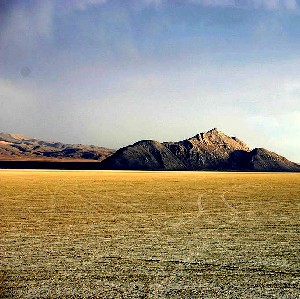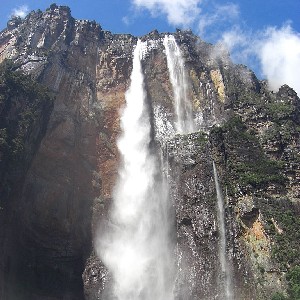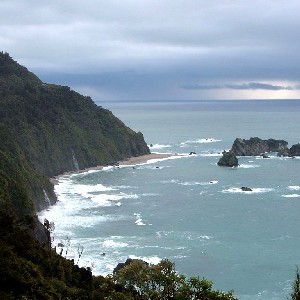Different types of landforms - Major landforms of the Earth
Dec 2016
Home ›
Planet earth ›
What are landforms? ›
Different major types of landforms of the Earth
The landforms are the features of our planet Earth. There are different types of landforms. Major landforms of the Earth are mountains, plateaus, plains, oceans, volcanoes and deserts. The landforms are formed by tectonic plate movements, volcanic eruptions and erosion or deposition by wind, water and ice. A natural landscape may comprise features of one or more of the different types of major landforms.
Several types of physical attributes such as elevation, gradient, weathering and physical state help in categorizing different major landforms. These types can also be categorized by the different processes contributing to their formation such as erosive or constructive actions of the wind, coastal weathering processes, processes associated with rivers and streams, accumulation of sediments, glacial erosion processes, glacial depositional processes, slopes and gradients and volcanic activity. There are umpteen minor landforms occupying niche places of the major ones.
Glacial landforms
Glaciers are highly dynamic and the rise or fall of temperature are the major types of influences constantly working on them. Movement of large sheets of ice can exert different depositional or erosional forces. Cirques, U-shaped valleys, aretes, glacial horns, hanging valleys and trim lines are some of different minor landforms created by the erosional forces. Depositional forces form glacial moraines, eskers, outwash fan and kames. Glacial movement also forms lakes and ponds.Coastal landforms
Coast is a dynamic interface between the ocean and the land. Different types of major natural forces like wind, waves and weather are factors influencing coastal landforms. Near the river mouths the flow of water keeps a constant supply of sediments. There is littoral drift of sediments along the coast forming barriers, bays, beaches and deposition landforms (spits).
Image source: wikipedia.org/wiki/File:Kluft-photo- Black-Rock-Desert-Aug-2005-Img_5081.jpg
Image attribution: Ikluft | License: CC BY-SA 3.0
Image attribution: Ikluft | License: CC BY-SA 3.0
Volcanic landforms
Volcanic eruptions over land as well as sea have given rise to many different unique types of major landforms on the Earth's face. Volcano is a rupture or opening on the Earth's crust, belching out molten lava, ashes and hot gases. Volcanoes are formed either by divergence of tectonic plates or by convergence of tectonic plates of the Earth. Some of the many different types of landforms connected with volcanic activity are volcanic islands, lava lakes, shield volcanoes, lava domes, cryptodomes, cinder cones, composite volcanoes and volcanic plateau.Fluvial landforms
Water flow constantly keeps changing the Earth's riverine topography causing many different types of major landforms to arise along its course. Some of the many different types of major river landforms created by the river flow are waterfalls, delta, canyon, valleys, basin, island and flood plain.Aeolian landforms
Deserts landforms are major features of the Earth's surface present in places where there is scant rain. They are produced by either the erosive or constructive action of the wind. In aeolian processes, wind transports and deposits sand particles to form dunes and sandhills. Apart from deserts there are many different types of major features formed by aeolian processes such as dunes, barchan dunes, sand hills, blowouts, sand sheets, loess, small depressions, ventifacts, yardangs and desert pavements.Erosional landforms
Many different types of major erosional forces are present on the Earth. They are rainfall, winds, floods, freezing, thawing, rivers, streams, waves, coastal erosion, glaciers and land slides. Each force singularly or with one or more forces can create different types of major erosional effects.Oceanic landforms
Oceans cover nearly 71% of the Earth's surface and contribute to nearly 97% of the water present. The natural forces like storms, ocean currents and under ocean volcanic activity shapes the different types of landforms associated with it. Some of the major types in the oceanic Earth are continental shelves, undersea mountain ranges, deep ocean trenches, mid-ocean ridge, abyssal hills and abyssal plains.Mountain landforms
Plate tectonics and volcanic activity form mountains. The tectonic plates move and collide, raising the Earth's crust. This is a slow process and over millions of years a mountain is formed. Volcanic activity also builds up mountains, in a shorter span of time. Mountains are under constant erosional force of wind and rains and lose their ruggedness as they age.Keywords: different, types, landforms, earth, major
Google+ page
By Mahmood Syed Faheem

Image source: wikipedia.org/wiki/File: Salto_del_Angel-Canaima-Venezuela08.JPG
Image attribution: Poco a poco|License:CC BY-SA 3.0
Image attribution: Poco a poco|License:CC BY-SA 3.0

Image source: wikipedia.org/wiki/File: Knight%27s_Point,_West_Coast.jpg
Image attribution: Swollib |License:CC BY-SA 3.0
Image attribution: Swollib |License:CC BY-SA 3.0
Advertisement